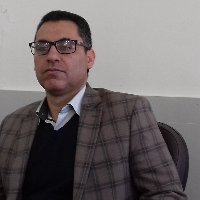Investigating the amount of triple types of social capital
Author(s):
Abstract:
The youth as the most important human capital, play a crucial role in development of every societies, and the social capital is considered as the most important issue in enhancing the youth's efficiency and improvement of their role in the enhancement of the community. The reduction in the social capital of the youth results in fading their role in the development of the society. Therefore, awareness about the amount of social capital of the youth could help the social programmers in reducing the drawbacks. The current paper aims to answer to this question focusing on the amount of social capital of the youth in Ilam province. The theoretical base of the paper includes the theories that express the social capital in 3 aspects of bonding, bridging and linking. The type of investigation method is functional description and the statistical data were collected by sampling from the statistical population of the youth of province via application of the volume proportional classified sampling. The findings of the research show that the average social capital of the youth in Ilam province is on the medium level. The averages of the social capital show no difference between the two genders. The maximum level of social capital was associated to political contribution and social Mediation, and the minimum was related to the amount of mass media application, :::::::union::::::: participation, and civil Intervention. The ranking of triple types of social capital according to the average obtained scores are: linking capital, bounding and bridging. The averages of each type of social capitals is on medium level. A significant difference was observed between the social capital of men and women, although the level of significance was indicative of a difference between the amount of social capital among men (2.88) and women (2.80) and the difference of the average was 0.85 for men, but this average difference is not too large. In other words, the difference between social capital of men and women is not considerable. The other hypothesis of the research focusing on the existence of a relationship between: habitat (city-village), marriage status, the level of education, employment condition, living of the parents, previous habitat and the history of residence in the neighborhood and the social capital were not confirmed.
Keywords:
Language:
Persian
Published:
Journal of Socio -Cultural Development Studies, Volume:3 Issue: 3, 2015
Pages:
61 to 90
magiran.com/p1587875
دانلود و مطالعه متن این مقاله با یکی از روشهای زیر امکان پذیر است:
اشتراک شخصی
با عضویت و پرداخت آنلاین حق اشتراک یکساله به مبلغ 1,390,000ريال میتوانید 70 عنوان مطلب دانلود کنید!
اشتراک سازمانی
به کتابخانه دانشگاه یا محل کار خود پیشنهاد کنید تا اشتراک سازمانی این پایگاه را برای دسترسی نامحدود همه کاربران به متن مطالب تهیه نمایند!
توجه!
- حق عضویت دریافتی صرف حمایت از نشریات عضو و نگهداری، تکمیل و توسعه مگیران میشود.
- پرداخت حق اشتراک و دانلود مقالات اجازه بازنشر آن در سایر رسانههای چاپی و دیجیتال را به کاربر نمیدهد.
In order to view content subscription is required
Personal subscription
Subscribe magiran.com for 70 € euros via PayPal and download 70 articles during a year.
Organization subscription
Please contact us to subscribe your university or library for unlimited access!


